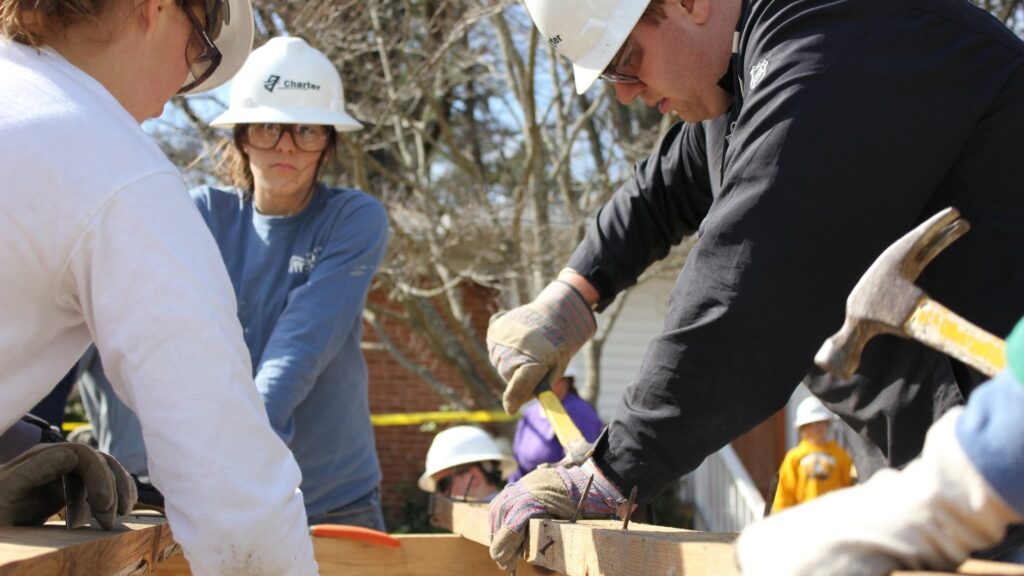This article originally ran for Strong Towns
I first fell in love with cities from reading Jane Jacobs’ book The Death and Life of Great American Cities. I especially resonated with her description of city streets as a “ballet,” finding it to be a delightfully accurate analogy for the kind of street life I experienced as a New Yorker.
At the heart of her analogy is a recognition of cities as an ecosystem: an organically evolving, complex habitat that relies on a delicate, sometimes imperceptible web of interdependencies. The ability of ecosystems to coordinate and satisfy various interests with little to no central planning is what draws us to cities. But this lack of central planning is also what makes them chaotic and unpredictable. It’s discomfort with this unpredictability that drove early American city planners to embrace the “rational” and “orderly” design of the suburb.
Unfortunately, attempting to make a complex ecosystem more orderly in a top-down fashion eventually destroys it. When it comes to the average North American city, the signs of ecosystem collapse are easily spotted if you know what to look for: design homogeneity, prohibitive codes that prevent adaptation, and fiscal fragility…just to name a few.
Advocating for resilience at the smallest level possible is the only way to respond to this impending collapse. Starting with our own homes, then moving into our neighborhoods and cities, the challenge is to figure out what resilience looks like and to identify meaningful action in that direction.
Yes, this is challenging, but by no means impossible. As a recent transplant to Waco, Texas, from Brooklyn, I’m finding that it’s much easier if you break it down into small steps and then arrange them so that they build off each other, like a ladder. Here are five “rungs” that have helped me get started and that might help you.

Rung One: Cultivate Curiosity
I’ll never forget the time I got into a debate about Waco after living here not only for one year. I was outnumbered by four young men, all of whom were very well-read, passionate and perceptive. The debate unfolded over two hours and at one point, one of the men, who was from Waco and whose father had been a former mayor, gently shook his head as I struggled to make my point. In a few sentences, he explained an aspect of Waco’s history that I knew nothing about, but that put the point I was trying to make into perspective.
I quieted down and over the next few days, realized that I probably should spend more time learning about Waco before making overly confident statements about the city. Learn from my mistake and take the time to learn about your city’s history, leaders, communities, weaknesses, and strengths before moving into advocacy or action. Having this kind of context will help you speak with more empathy and humility, both of which are essential to advocating for resilience, especially if you’re new to a city like I am to Waco.
Books are great, but it’s worthwhile to observe your city through the senses, as well. When you can do so safely, trade your car and run an errand or two by walking, biking, or riding public transit. These forms of transit are slower and perhaps not the most convenient, so you’ll have to do some extra planning, but they will provide you with an invaluable new perspective on your city’s layout and design, and provide the breeding ground for the kinds of questions that can drive meaningful action.
Rung Two: Follow Your Strengths/Interests/Frustrations
These days, city leaders and residents are facing a variety of urgent issues, from funding pension funds to fighting restrictive zoning, to repairing streets and tackling food deserts. There’s no possible way you’ll be able to participate in everything.
All of these issues are important to the well-being of the city, but it can be overwhelming and intimidating if you aren’t strategic in how you invest your attention and time. How do you sort through all of the issues and hone in on one or two? Take time to identify your strengths, values, and interests. As a car-free resident of Waco, improving the bikeability and walkability of Waco has become a top issue for me. It’s a personal issue when I can’t cross a street safely, when sidewalks randomly disappear and when the streets are too dark to bike at night.
Let these be your guide as you seek to identify opportunities for meaningful engagement. Action rooted in your strengths and interests is likely to be much more long-lasting and sustaining for when things get hard. Once you’ve found your core issue, focus your research, conversations, and thinking, identifying one small, actionable step you can take—and don’t spend time feeling bad about all the issues you’re not working on.
Rung Three: Build a Tribe
Once you’ve settled on one issue that energizes you, the next step is to find other people who share your interest. Advocating for change in our cities is no easy feat. You’re much more likely to identify meaningful action and stay motivated if you have at least one other person who shares your concerns and who is also willing to take action alongside you.
This could take different forms: working with a friend, volunteering at a nonprofit, or finding a local advocate and working alongside them. Even if you don’t perfectly agree with their approach, you’re quite likely to learn something, meet new people, and gain important skills. Of course, it may be the case that you find yourself in an action-desert. In this case, look for opportunities to learn from people working on the same issue in other cities.
The exact form may fluctuate, but the goal is the same: situate yourself alongside other like-minded people. Don’t go it alone.
Rung Four: Expect Resistance
There’s no beating around the bush: getting involved in your city will mean enduring against all kinds of negative experiences. Meetings will be long and boring. Processes will be confusing. Response times will be lengthy. Your good ideas will be resisted, misunderstood, modified, and perhaps entirely ignored.
In short, your resolve will be swiftly tested. You should expect this. Expect it to be a long, boring, frustrating endeavor. Expect to perhaps not see results of your work. If you expect resistance ahead of time, it won’t be such a shock when that moment comes. Also, adopting this kind of “long-haul” determined mindset will help you identify truly sustainable actions, prepare for challenges, and prevent burnout.
Rung Five: Know Your “Why”
Your why is your philosophical reason why you take the time to engage with your city. Perhaps you draw from a certain body of political philosophy, your faith, environmental concerns, or a deep commitment to the future generation. Whatever is your “why,” take time to think it through and write it down. Come back to it often and refine it as you learn more about this work. The “why” will keep you going.
Perhaps this rung should be first, but I’ve found that the “why” often comes after you start taking action, so don’t wait for a deep philosophical epiphany before you get started. If you’re reading this, chances are you already know that being involved in your city is good for you and that’s enough to get started. More philosophical motivations will reveal themselves over time.
Climbing the Ladder
I recently started leading a discussion group through my City Discovery Toolkit, a free, eight-step process I wrote to help people learn about their city and identify opportunities for meaningful action.
So far, only a few people have completed it, but it’s been rewarding to see my friends build their own ladders of engagement. One friend joined her community garden effort, another aspires to improve her neighborhood’s doggie-bag stations, while another wants to do something about her neighborhood playground currently littered with needles.
Their stories inspire me to keep going as I try to take meaningful action here in Waco. I won’t lie that it’s hard work. Navigating sprawled-out dysfunctional urban landscapes and contemplating ways to advocate away from cataclysmic collapse is a tall order, but…I suppose it’s a good thing we can build ladders.
